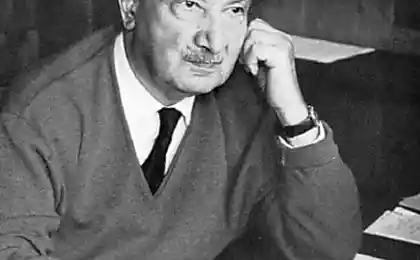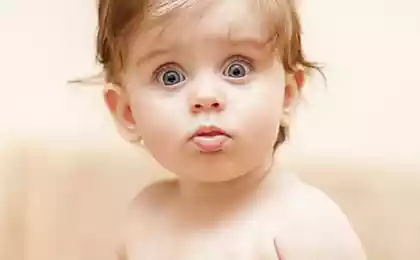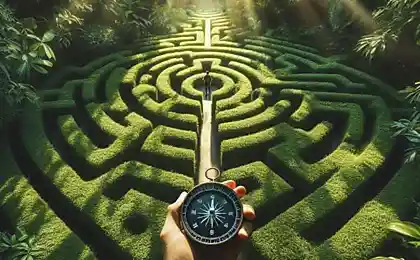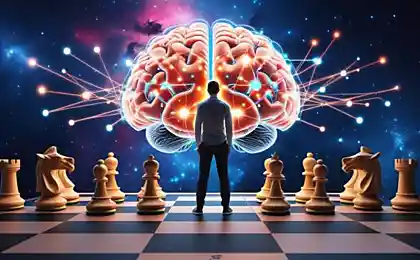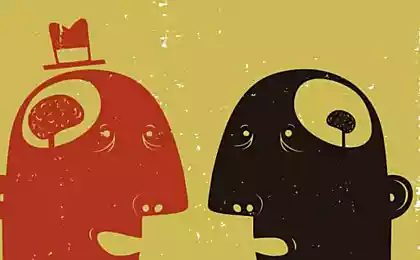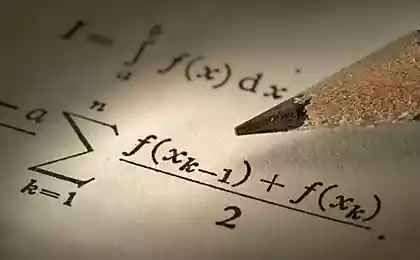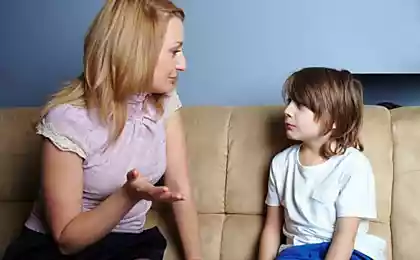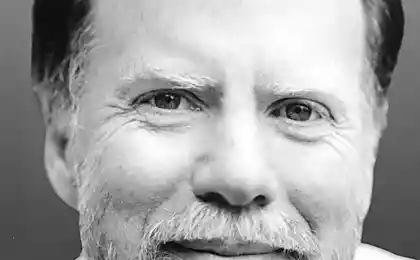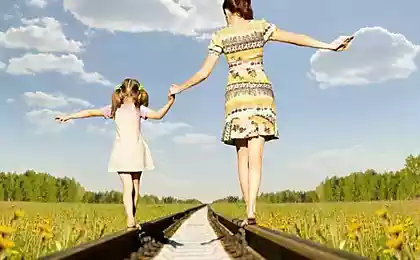754
The stages of development of thinking at preschool age: how and what to teach the child
Parents of preschoolers are more than just busy searching for the answer to the question "how and what to teach my child?" They choose from many innovative techniques "the best of", write down the child in various clubs and studios, doing a variety of "educational games" and teach the child almost from the cradle to read and count. What is the development of thinking at preschool age? And, indeed, what priority to educate their children?
As in any field of personality development, a child's thinking goes through several stages of formation. In psychology it is customary to define three stages of thinking: clearly-effective, visual-figurative and verbal-logical.
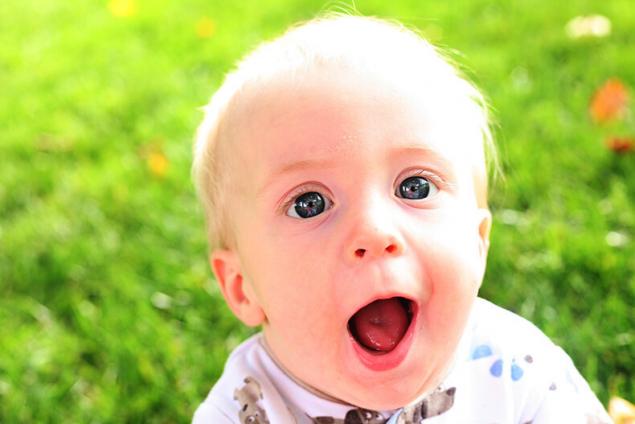
For baby, who learns the world through the active work of all organs of the senses, the basis of the information are motor and tactile sensory channels.
A small child in the early childhood (1-3 years) literally "thinking hands". From the receptors of these channels depends not only on their own information, but also the activity of other senses other senses.
What does it mean? For example, visual perception of the baby is not perfect, its capabilities, compared to the vision of an adult, is somewhat limited. The child does not understand perspective – it seems that if high-rise building barely visible on the horizon, it is very small.
It is still not always able to understand the three-dimensionality of things. The kid doesn't understand visual illusions, for example, wants to reach the sky or touch a rainbow. Image to it is a specific condition of the subject, he does not believe, what is depicted does not really exist.
In this children's perception resembles primitive man. Seeing the evil character in the book of fairy tales, the child closes his hands "good fellow," and so forth. Everything a child sees, he wants to touch, to act with this item, try it out. And the more action he's doing with the thing, the better it perceives its properties. The better not only does he have motor and tactile, but also visual channel of perception.
Visual-active thinking is a method of "trial and error". Getting a new subject, the child first tries to interact with it – try on the tooth, shakes, knocks them on the floor, turned on all sides.
In his book "a Child learns to speak" by M. Koltsov cites an interesting experiment: two groups of kids who started to speak the first words, showed some items to remember new words. One group was allowed to play with items in the other – only show called. Children from the first group much quicker and better remember the names of new items and entered them into the speech than in the second group.
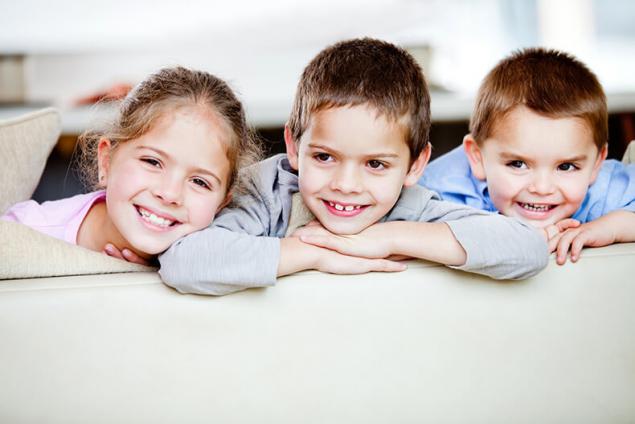
Every seen object for a child – a new puzzle that needs to "understand", and then "collect". The only thing he is interested in early childhood – what can be done about it? Therefore, it is dangerous fascination with newfangled techniques, offering studies in early childhood, attempts to develop kids logic or the foundations of analytical thinking.
What to do with the baby? Often included in any household activity, let them participate in all of mom's things – washing dishes, dusting, sweeping. Of course, such "help" mom sometimes you have more to clean, but teaching is always by trial and error! It was during early childhood the child learns to activities as active as ever at a later date.
And for the development of space understanding of the relationship of things he needs to take real, meaningful action by imitating adults, and not shifting details of special "educational" games. It is also useful to mess around with different substances – sand, water, snow. However, the variety of textures you can find at home, without any special training – different cereals, pieces of cloth, dishes and all sorts of usual household things.
In terms of creative development, the child is now undergoing a period of familiarization with the materials where they need to provide complete freedom and not to expect any "DIY" and any other results.
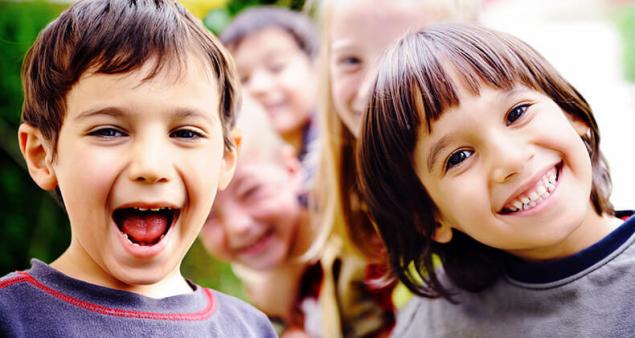
Visual-figurative thinking. The role of imagination in the development of thinking. Game as leading activity.
The second stage of development of thinking occurs in approximately 3-4 years and lasts up to 6-7 years. Now thinking the child is a descriptive. He can rely on past experience – the mountains in the distance doesn't seem flat to understand that big stone - hard, he doesn't have to take it in hands, his brain has accumulated a lot of information from various sensory channels.
Children gradually move from the actions with the objects themselves to action their images. In the game the child is not necessary to use a subject Deputy he could imagine "gaming material" — for example, "to eat" from an imaginary plate of imaginary spoon. Unlike the previous stage when, in order to think, the child was required to take the subject in hand and to interact with it, now it is enough to represent it.
During this period, the child actively uses images – not only imaginary in the game when instead of a cube is the machine, and in the empty hand "is" spoon, but in the works. It is very important at this age to teach a child to use ready-made schemes, not to impose their own ideas.
At this age the development of imagination and ability to generate new images are key to the development of intellectual abilities – after all, the thinking is imaginative, the better the child comes up with his images, the better the brain develops. Many people think that fantasy is a waste of time.
However, from how it develops creative thinking, it depends on the next, logical, step. So do not worry if the child is 5 years old does not know how to read and write. Much worse, if he can not play without toys (sand, sticks, stones, etc.) and loves to be creative!
In creative activities the child is trying to represent his invented images, looking for associations with known objects. Very dangerous in this period to "teach" a child to the specified images, for example, painting pattern, painting, etc. This prevents him to create his own images, that is, to think.
Verbal-logical thinking and its connection with the early stages. Do I need to form this type of thinking in advance?
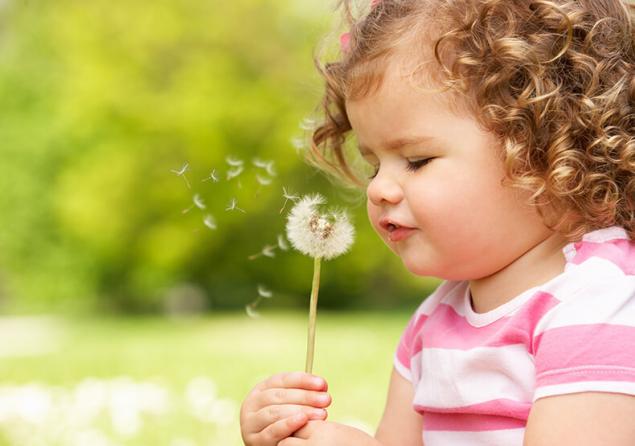
In the period of early and preschool childhood the child absorbs the sounds, images, smells, movement and tactile sensations. Then there is the understanding gained of the material, processing the received information. By the end of the preschool period the child has well developed speech, he already owns abstract concepts and can generalize.
So gradually (about 7 years) there is a transition to the next step of development thinking – it becomes a verbal-logical. It allows you to not think in images, and concepts, to structure and outline the information obtained through the senses. In 3-4 years the child tries to classify known objects, for example: Apple and pear fruit, and a chair and table – furniture.
He often accompanies his actions with comments, asks endless questions, for it is the name of the subject – marking of its existence. But it has not yet become a tool of thinking, it is only an auxiliary tool.
To primary school age word for a child is becoming an abstract concept and not related to a specific way. For example, for baby to three years, "sofa" is only known to him the sofa, standing in his living room. He has no generalization and abstraction from a specific image.
Children of 7-8 years old can already escape from a specific image and to highlight the main concepts. The child determines the essential features of an object or phenomenon, include a new object to the known categories, and, by contrast, fills a new category related concepts. Children are able to assess the real size of the object (of the ten-storied house on the horizon doesn't seem tiny). They formed a causal relationship, General characteristics of events and objects. They are able to perform actions without relying on images.
But, how do we, adults – parents and teachers – didn't seem perfect verbal-logical thinking, do not rush to form it artificially preschooler. If the child is not allowed to fully enjoy the game with the images to teach him to think logically in the period when he is not ready for this, the result is the opposite.
Very schematic, the weak thinking, the formalism and lack of initiative meet those children who passed the severe school "early development", as it is now fashionable to call the mechanical training of children. In an age when the brain is ready to operate with vivid imagery, he brought a dry scheme, not allowing to enjoy all the richness of colors, tastes and smells of this world. All in good time, and a child will pass all stages of development of thinking, may each of them will give him all that is only possible in a certain period.published
Author: Marina Ozerova
See also: How to teach children Gratitude
NEVER laugh son!
P. S. And remember, only by changing their consumption — together we change the world! ©
Join us in Facebook , Vkontakte, Odnoklassniki
Source: spb-home-edu.livejournal.com/9430.html
As in any field of personality development, a child's thinking goes through several stages of formation. In psychology it is customary to define three stages of thinking: clearly-effective, visual-figurative and verbal-logical.

For baby, who learns the world through the active work of all organs of the senses, the basis of the information are motor and tactile sensory channels.
A small child in the early childhood (1-3 years) literally "thinking hands". From the receptors of these channels depends not only on their own information, but also the activity of other senses other senses.
What does it mean? For example, visual perception of the baby is not perfect, its capabilities, compared to the vision of an adult, is somewhat limited. The child does not understand perspective – it seems that if high-rise building barely visible on the horizon, it is very small.
It is still not always able to understand the three-dimensionality of things. The kid doesn't understand visual illusions, for example, wants to reach the sky or touch a rainbow. Image to it is a specific condition of the subject, he does not believe, what is depicted does not really exist.
In this children's perception resembles primitive man. Seeing the evil character in the book of fairy tales, the child closes his hands "good fellow," and so forth. Everything a child sees, he wants to touch, to act with this item, try it out. And the more action he's doing with the thing, the better it perceives its properties. The better not only does he have motor and tactile, but also visual channel of perception.
Visual-active thinking is a method of "trial and error". Getting a new subject, the child first tries to interact with it – try on the tooth, shakes, knocks them on the floor, turned on all sides.
In his book "a Child learns to speak" by M. Koltsov cites an interesting experiment: two groups of kids who started to speak the first words, showed some items to remember new words. One group was allowed to play with items in the other – only show called. Children from the first group much quicker and better remember the names of new items and entered them into the speech than in the second group.

Every seen object for a child – a new puzzle that needs to "understand", and then "collect". The only thing he is interested in early childhood – what can be done about it? Therefore, it is dangerous fascination with newfangled techniques, offering studies in early childhood, attempts to develop kids logic or the foundations of analytical thinking.
What to do with the baby? Often included in any household activity, let them participate in all of mom's things – washing dishes, dusting, sweeping. Of course, such "help" mom sometimes you have more to clean, but teaching is always by trial and error! It was during early childhood the child learns to activities as active as ever at a later date.
And for the development of space understanding of the relationship of things he needs to take real, meaningful action by imitating adults, and not shifting details of special "educational" games. It is also useful to mess around with different substances – sand, water, snow. However, the variety of textures you can find at home, without any special training – different cereals, pieces of cloth, dishes and all sorts of usual household things.
In terms of creative development, the child is now undergoing a period of familiarization with the materials where they need to provide complete freedom and not to expect any "DIY" and any other results.

Visual-figurative thinking. The role of imagination in the development of thinking. Game as leading activity.
The second stage of development of thinking occurs in approximately 3-4 years and lasts up to 6-7 years. Now thinking the child is a descriptive. He can rely on past experience – the mountains in the distance doesn't seem flat to understand that big stone - hard, he doesn't have to take it in hands, his brain has accumulated a lot of information from various sensory channels.
Children gradually move from the actions with the objects themselves to action their images. In the game the child is not necessary to use a subject Deputy he could imagine "gaming material" — for example, "to eat" from an imaginary plate of imaginary spoon. Unlike the previous stage when, in order to think, the child was required to take the subject in hand and to interact with it, now it is enough to represent it.
During this period, the child actively uses images – not only imaginary in the game when instead of a cube is the machine, and in the empty hand "is" spoon, but in the works. It is very important at this age to teach a child to use ready-made schemes, not to impose their own ideas.
At this age the development of imagination and ability to generate new images are key to the development of intellectual abilities – after all, the thinking is imaginative, the better the child comes up with his images, the better the brain develops. Many people think that fantasy is a waste of time.
However, from how it develops creative thinking, it depends on the next, logical, step. So do not worry if the child is 5 years old does not know how to read and write. Much worse, if he can not play without toys (sand, sticks, stones, etc.) and loves to be creative!
In creative activities the child is trying to represent his invented images, looking for associations with known objects. Very dangerous in this period to "teach" a child to the specified images, for example, painting pattern, painting, etc. This prevents him to create his own images, that is, to think.
Verbal-logical thinking and its connection with the early stages. Do I need to form this type of thinking in advance?

In the period of early and preschool childhood the child absorbs the sounds, images, smells, movement and tactile sensations. Then there is the understanding gained of the material, processing the received information. By the end of the preschool period the child has well developed speech, he already owns abstract concepts and can generalize.
So gradually (about 7 years) there is a transition to the next step of development thinking – it becomes a verbal-logical. It allows you to not think in images, and concepts, to structure and outline the information obtained through the senses. In 3-4 years the child tries to classify known objects, for example: Apple and pear fruit, and a chair and table – furniture.
He often accompanies his actions with comments, asks endless questions, for it is the name of the subject – marking of its existence. But it has not yet become a tool of thinking, it is only an auxiliary tool.
To primary school age word for a child is becoming an abstract concept and not related to a specific way. For example, for baby to three years, "sofa" is only known to him the sofa, standing in his living room. He has no generalization and abstraction from a specific image.
Children of 7-8 years old can already escape from a specific image and to highlight the main concepts. The child determines the essential features of an object or phenomenon, include a new object to the known categories, and, by contrast, fills a new category related concepts. Children are able to assess the real size of the object (of the ten-storied house on the horizon doesn't seem tiny). They formed a causal relationship, General characteristics of events and objects. They are able to perform actions without relying on images.
But, how do we, adults – parents and teachers – didn't seem perfect verbal-logical thinking, do not rush to form it artificially preschooler. If the child is not allowed to fully enjoy the game with the images to teach him to think logically in the period when he is not ready for this, the result is the opposite.
Very schematic, the weak thinking, the formalism and lack of initiative meet those children who passed the severe school "early development", as it is now fashionable to call the mechanical training of children. In an age when the brain is ready to operate with vivid imagery, he brought a dry scheme, not allowing to enjoy all the richness of colors, tastes and smells of this world. All in good time, and a child will pass all stages of development of thinking, may each of them will give him all that is only possible in a certain period.published
Author: Marina Ozerova
See also: How to teach children Gratitude
NEVER laugh son!
P. S. And remember, only by changing their consumption — together we change the world! ©
Join us in Facebook , Vkontakte, Odnoklassniki
Source: spb-home-edu.livejournal.com/9430.html
High levels of uric acid are a powerful risk factor for obesity, senile dementia and more!
Effective remedy from wrinkles, which is worth a penny!


